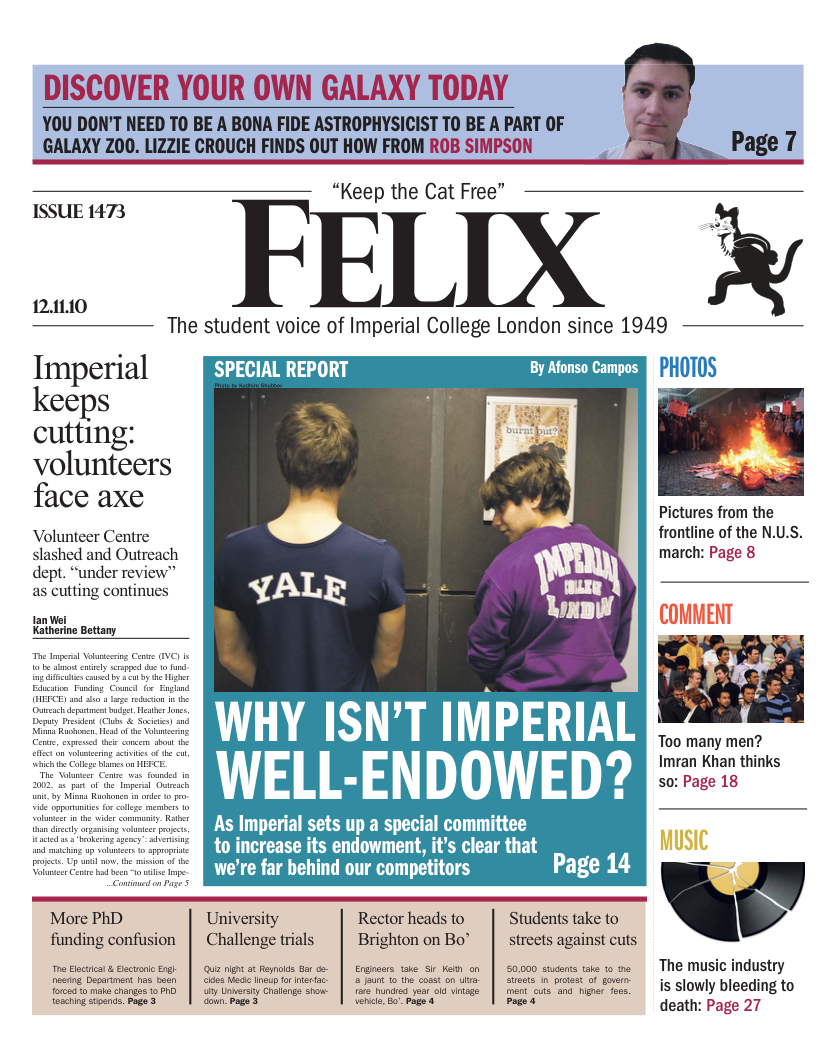Pale, stale and male
University funding reforms fail in one crucial respect.The evidence for this is right here at Imperial College. By Imran Khan (Director of the Campaign for Science and Engineering and Imperial College alumnus)

Science and engineering have serious institutional problems when it comes to diversity. I say this as head of an organisation whose purpose it is to champion this sector.
Only one in ten graduate engineers are women. Disabled people make up 5.9% of the total workforce, but only 3.8% in science, engineering, and technology. Only one in twenty chemistry lecturers isn’t white. Amongst our international competitors, the UK ranks disappointingly badly when it comes to how student performance in science and maths correlates with socio-economic background.
There are lots of reasons why this should be, and some of them are complicated and obscure – but it’s obvious why it’s unacceptable.
Thousands of people are being deterred from careers they would excel in, which is a loss to those individuals. But it also means a loss to society, and the economy. We’re talking about thousands of people who could be making advances, and might be excelling in their field, if it wasn’t due to the discrimination which seems to be built-in to our science and engineering establishment.
And when I say ‘establishment’, I don’t refer to remote upper echelons. Look around you. More than six in seven of all professors at Imperial College are male. Less than one in ten black African applicants end up getting in.
Progress is being made. For instance, Imperial is one of only two universities that ranked in the top 100 LGBT workplaces last year, and the gender gap for academics here is (very slowly) narrowing. But the statistics highlight the scale of the problem. It’s going to take decades of consistent effort before we can safely say that regardless of the circumstances of your birth or your lifestyle, you’ve got an equal chance of making it as a scientist or engineer.
So it’s really quite important that if something looks set to start to unravel good work which has already been done, it must be countered. In the Higher Education funding reforms we could face such a challenge.
Broadly, the reforms go far in securing lower graduate contributions from the lowest earners. But they may fail in one crucial respect that’s very relevant to us.
It’s no secret that science and engineering degrees cost more than arts and humanities to teach. Think of the cost of a physics laboratory versus a philosophy library. Luckily, current funding models mean that (as long as you’re not a foreign student) you have free choice over what to study, because all degrees have the same annual cost. That may be about to change.
The government has left the door open to universities now charging differential fees for different subjects. Although there may still be some central government funding for STEM degrees, it won’t necessarily be enough to make sure those degrees don’t cost more than arts and humanities.
We already know that the cost of going to university affects student choice. For instance, some students (particularly those from certain ethnic minorities) choose to live at home rather than moving out, based on financial considerations. This obviously limits which universities they can attend.
The danger is that students may soon be forced into taking their second-choice degrees, or going to their second-choice universities, because of a decision about debt - rather than a decision about what they could achieve.
If that happens it would counteract enormous amounts of effort that have gone into widening participation in science and engineering, and exacerbate existing inequalities. It’s important we make sure that the overriding concern for applicants is their own academic merit and drive, not a subject-specific financial trade-off.
Science has always benefited from diversity - we shouldn’t lose sight of that. It’s in difficult times that we need innovation the most.







